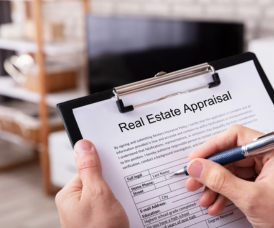Dealing with the loss of a loved one is overwhelming enough and navigating the complex financial implications shouldn’t make it worse. Yet many executors, heirs, and estate attorneys in Chicago & Illinois find themselves scrambling to make sense of one critical but often misunderstood requirement: the date of death appraisal.
Let’s break down the realities of Date of Death Appraisals in Chicago & Illinois, and more importantly, explore the nuances most experts and families completely overlook.
When should a date of death appraisal be done?
Immediately? Weeks later? Many assume it’s best to wait for probate or estate planning, but that’s a costly mistake. The optimal window for a date of death appraisal is within a few weeks of the passing. Not because the market will shift dramatically (though it can), but because waiting may lead to lost documentation, property changes, or even disputes among heirs.
Early appraisals also allow tax professionals to begin working within the IRS’s reporting timelines, this is especially crucial if the estate exceeds the federal exemption threshold.
Why the IRS Cares—and You Should Too
Let’s be clear: this isn’t just a formality. IRS guidelines for date of death appraisal are explicit. They expect a “fair market value” assessment as of the decedent’s passing. This valuation determines capital gains if and when an heir sells the property later. A poorly done or rushed appraisal may result in inflated taxes years down the road.
Imagine a home inherited by three siblings. Ten years later, one sells. If the date of death appraisal wasn’t done, that sibling could be on the hook for thousands in capital gains, because the IRS assumes a $0 cost basis unless proven otherwise.
Understanding True Value
Date of death appraisal requirements go beyond square footage and sale comps. Appraisers in the Chicago area must account for zoning, renovations, market trends at the time of death, and hyperlocal data. Appraisers will not evaluate a home in Bronzeville the same way as a home in Lincoln Park, even if the two appear identical on paper.
That’s where localized providers like date of death appraisals TYKE Appraisals excel, we understand the timing. We know the intricacies of property values specific to the date of death appraisal chicago area, which is what the IRS requires.
The Hidden Cost of Delay
Most people never ask: what’s the real date of death appraisal cost?
It’s not just the appraiser’s fee. It’s the cost of failing to plan. Probate delays, family disputes, tax penalties, even challenges to the will—these are real outcomes that stem from inaccurate or missing property valuations.
A typical date of death appraisal in the Chicago area may cost a few hundred dollars, but the downstream savings (or liabilities) can easily reach into the tens of thousands.
Challenging the Industry’s Lazy Thinking
A thoughtful, professional date of death appraisal should withstand legal challenges, financial audits, and family disagreements. Yet many appraisal firms avoid complex cases like multifamily properties or those with unusual histories because they require deeper analysis.
This is where we need to challenge industry norms. Executors should expect more than a PDF report. They need a partner who understands.
Why Local Expertise Beats National Scale?
If you’re working with a national chain, you might be missing out on market-specific intelligence. A qualified appraiser in the Chicago area analyzes the specific moment in time the property existed under unique market conditions.
In places like Oak Park, Hyde Park, or Evanston, block-by-block variations matter. So do shifts like school redistricting, gentrification, or municipal projects. Only someone embedded in the region can accurately assess those.
That’s why providers like TYKE Appraisals continue to be sought after in Chicago & Illinois. They combine technical appraisal skills with lived local understanding.
Conclusion:
When someone passes away, their property doesn’t pause, it continues to age, weather, and react to the market. So does its value.
Don’t leave this critical piece of estate management to chance. Know when a date of death appraisal should be done, understand the date of death appraisal requirements, and don’t underestimate the date of death appraisal cost. You only get one shot at a credible, defensible valuation. Make it count.









